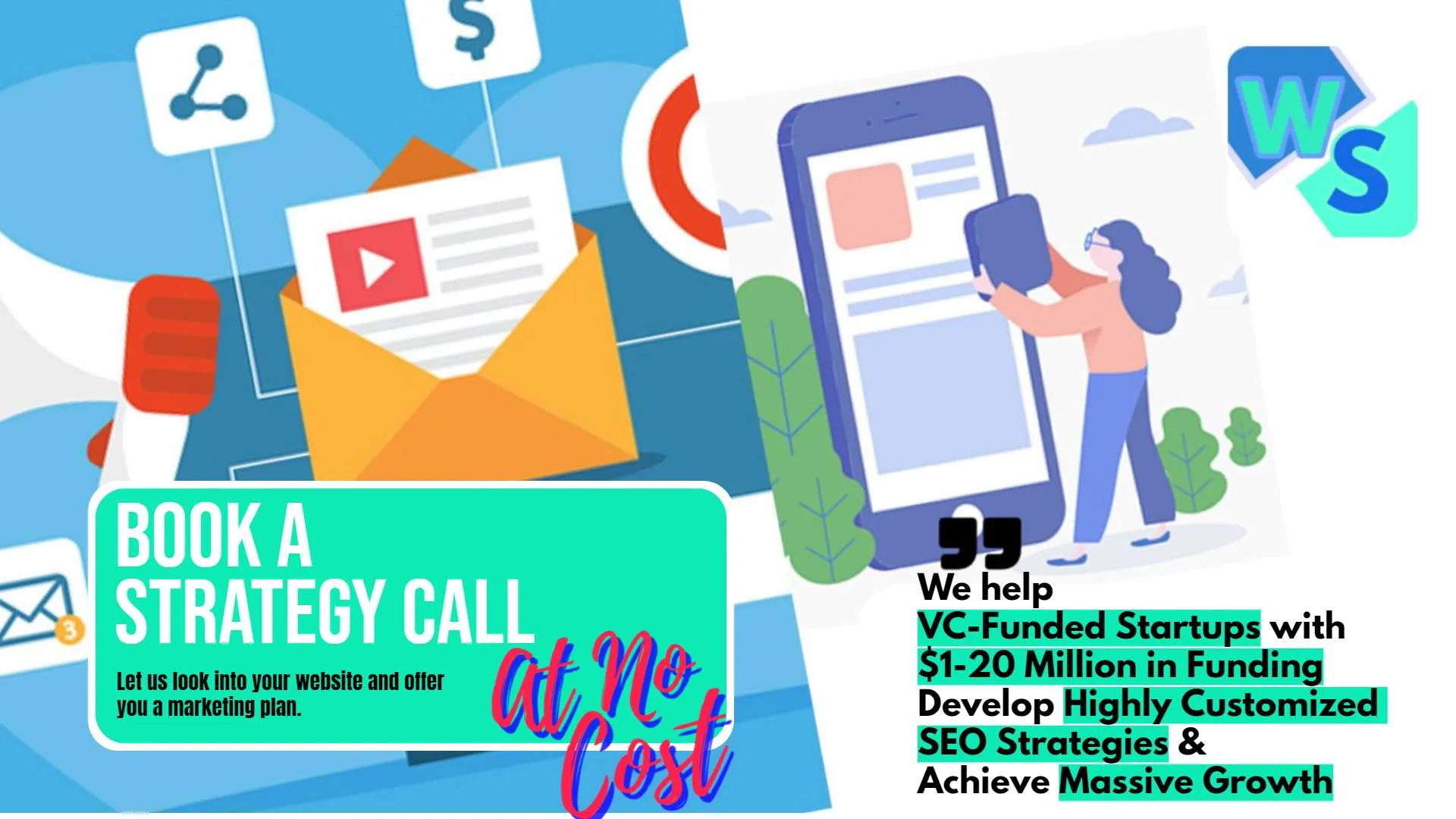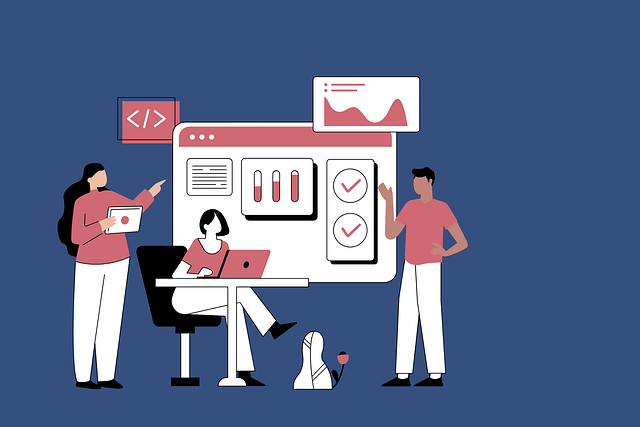Customer segmentation has always been the backbone of effective marketing. It’s how you figure out who your audience is, what they need, and how to connect with them in a meaningful way. But traditional segmentation methods often fall short—especially in the complex world of B2B marketing, where customer needs are diverse and decision-making involves multiple layers.
This is where artificial intelligence (AI) steps in, revolutionizing how B2B marketers segment their audiences. AI doesn’t just categorize leads based on basic demographics; it dives deep into behaviors, preferences, and predictive patterns. The result? Hyper-targeted campaigns that drive better engagement and higher ROI.
In this article, we’ll explore how AI is reshaping customer segmentation for B2B marketers and, more importantly, how you can use it to supercharge your strategy.
Understanding the Challenges of Traditional B2B Segmentation
Traditional segmentation often relies on static data like company size, industry, or geographic location. While these factors provide a starting point, they’re rarely enough to capture the nuances of B2B decision-making. Businesses aren’t one-dimensional, and their needs can shift based on market conditions, growth stages, or even internal restructuring.
The Limitations of Static Segmentation
For example, two companies in the same industry might have vastly different priorities. One might be focused on scaling operations, while the other is cutting costs. Treating them the same would result in generic messaging that fails to resonate with either.
Static segmentation also struggles to keep up with real-time changes. By the time you’ve segmented your audience, their needs may have already evolved. This lag can make your campaigns feel outdated and irrelevant.
Data Overload in the B2B Space
B2B marketers often have access to vast amounts of data—from website analytics and CRM records to social media interactions and email engagement. While this data is invaluable, it can also be overwhelming. Sorting through it manually to identify meaningful patterns is time-consuming and prone to error.
This is where many marketers hit a wall. With so much information at their disposal, they struggle to focus on what really matters. As a result, their segmentation efforts become superficial, leaving valuable insights untapped.
The Complexity of B2B Decision-Making
Unlike B2C, where decisions are often made by individuals, B2B purchases involve multiple stakeholders. Each stakeholder may have different concerns, priorities, and levels of influence. A single company can have dozens of decision-makers, all with varying degrees of involvement.
For example, a procurement manager might focus on price, while a CTO is more concerned with compatibility and scalability. A one-size-fits-all segmentation approach doesn’t account for these nuances, leading to disconnected messaging that fails to address key pain points.
How AI is Transforming B2B Customer Segmentation

AI brings a level of agility to customer segmentation that was previously unattainable. Instead of relying on static data, AI continuously analyzes new information to refine segments in real time. This means your campaigns stay relevant, even as your customers’ needs evolve.
Dynamic Segmentation in Real Time
For instance, if a prospect visits your website multiple times and downloads a technical whitepaper, AI can detect this behavior and automatically move them into a segment for highly engaged leads. This allows you to target them with content or offers tailored to their specific stage in the buyer’s journey.
Dynamic segmentation ensures that your messaging always aligns with the current needs and behaviors of your audience, maximizing engagement and conversion rates.
Behavioral Insights Beyond Demographics
AI excels at identifying patterns in behavior that traditional methods often miss. It doesn’t just look at surface-level data like job titles or company size—it dives into how users interact with your content, website, and emails.
For example, AI can analyze which topics resonate most with different segments based on content engagement. It might discover that C-suite executives prefer high-level thought leadership articles, while mid-level managers engage more with practical how-to guides. Armed with these insights, you can create targeted campaigns that speak directly to each group’s interests.
Behavioral segmentation powered by AI enables you to move beyond assumptions and focus on what truly matters to your audience.
Predictive Analytics for Future-Proof Campaigns
One of AI’s most powerful capabilities is predictive analytics. By analyzing historical data, AI can forecast future behavior, helping you anticipate customer needs before they arise. This proactive approach gives you a competitive edge in the crowded B2B landscape.
For instance, AI might identify that certain companies are likely to churn based on declining engagement metrics. With this insight, you can intervene early with personalized retention strategies, such as exclusive offers or tailored support.
Predictive analytics also helps you prioritize high-value leads. By scoring prospects based on their likelihood to convert, AI ensures that your sales team focuses their efforts where it matters most, improving efficiency and ROI.
Implementing AI-Powered Segmentation in Your B2B Strategy

Before you can leverage AI, you need to gather all your data into a centralized platform. This includes CRM records, website analytics, email engagement, social media activity, and any other relevant sources.
Step 1: Consolidate Your Data
Data silos are a common challenge for B2B marketers, but breaking them down is essential. AI thrives on comprehensive data sets, and incomplete information will limit its effectiveness. Use tools like Customer Data Platforms (CDPs) to integrate your data and create a unified view of your audience.
Step 2: Choose the Right AI Tools
Not all AI tools are created equal, so it’s important to choose one that aligns with your needs and goals. Platforms like Salesforce Einstein, HubSpot’s AI tools, or standalone solutions like Infer and 6sense offer advanced AI capabilities for B2B segmentation.
Look for tools that integrate seamlessly with your existing marketing stack and provide features like real-time analysis, predictive modeling, and automation. Many platforms offer free trials, so take the time to test them and ensure they meet your requirements.
Step 3: Define Your Objectives
AI is a powerful tool, but it needs direction. Start by defining clear objectives for your segmentation efforts. Are you trying to increase lead conversion rates, improve customer retention, or enhance cross-selling opportunities? Your goals will determine how you use AI and what metrics you prioritize.
For example, if your goal is to increase upsells, focus on identifying existing customers who are most likely to benefit from additional products or services. AI can analyze purchase history and usage patterns to create targeted upsell campaigns.
Step 4: Test and Refine Your Segments
Once your AI system is up and running, don’t assume it will deliver perfect results from day one. Segmentation is an iterative process, and even the best AI models need fine-tuning.
Regularly test your segments by running targeted campaigns and analyzing the results. Are certain segments underperforming? Are your assumptions about customer behavior holding up? Use these insights to adjust your criteria and improve your segmentation over time.
The Benefits of AI-Driven Segmentation

AI takes the guesswork out of segmentation by basing decisions on hard data. This precision ensures that your messaging resonates with the right audience, increasing engagement and conversions.
Increased Precision
For example, instead of sending the same email to your entire contact list, AI allows you to create hyper-specific segments, like “IT managers at mid-sized tech companies who attended a recent webinar.” The more precise your targeting, the higher your chances of success.
Better Resource Allocation
With AI, you can focus your resources where they’ll have the most impact. Predictive analytics helps you identify high-value leads and opportunities, ensuring your sales and marketing teams aren’t wasting time on low-priority prospects.
This efficiency translates into higher ROI. By targeting the right audience with the right message, you maximize the effectiveness of your campaigns without increasing your budget.
Enhanced Customer Experience
Personalized experiences are no longer a luxury—they’re an expectation. AI-driven segmentation allows you to deliver tailored content and offers that make your customers feel understood and valued.
For instance, sending a custom pricing proposal based on a company’s unique needs shows that you’ve done your homework. This level of personalization not only builds trust but also strengthens your relationships with key accounts.
The Future of AI in B2B Segmentation
As AI technology continues to evolve, its impact on B2B segmentation will only grow. Expect to see even more advanced capabilities, such as real-time decision-making powered by machine learning and deeper integrations with emerging technologies like voice search and conversational AI.
For B2B marketers, the message is clear: AI isn’t just a tool—it’s a game-changer. By embracing its potential now, you can stay ahead of the curve and deliver experiences that set your brand apart.

Related: Check out our free tools:

Case Studies: How B2B Marketers Are Succeeding with AI-Driven Segmentation
HubSpot: Driving Lead Engagement with Predictive Insights
HubSpot, a leader in inbound marketing, leverages AI to enhance its lead segmentation and engagement strategies. By integrating AI into its CRM, HubSpot identifies patterns in user behavior, such as which leads are more likely to engage based on previous actions.
For example, if a lead downloads multiple whitepapers on a specific topic, HubSpot’s AI can flag them as a high-intent lead for that topic. This allows sales teams to prioritize outreach with highly relevant messaging. The result? Increased lead conversions and more effective resource allocation.
This example shows the power of combining AI with a robust CRM. Even small businesses can replicate this approach by integrating AI tools into their existing systems to track and analyze customer behavior.
IBM Watson: Hyper-Personalized Campaigns for Enterprise Clients
IBM’s Watson AI is used to create highly personalized B2B campaigns for its enterprise clients. One standout example involved using Watson to analyze client needs, past interactions, and industry trends to create tailored marketing strategies.
For instance, Watson segmented clients based on their likelihood to adopt specific IBM solutions, such as cloud computing or AI analytics. It then generated custom content—like case studies or ROI calculators—aligned with each segment’s pain points.
By delivering content that spoke directly to client concerns, IBM saw improved engagement rates and shorter sales cycles. This showcases how AI-driven segmentation can enhance not just marketing but also the sales journey, particularly in long B2B buying cycles.
Adobe: Real-Time Audience Targeting
Adobe uses AI for real-time audience targeting across its suite of marketing tools. By analyzing live customer interactions, Adobe’s AI-powered tools dynamically adjust campaigns to reflect user intent.
For example, if a prospect browses Adobe’s website for information on design tools, AI ensures they’re served relevant ads, emails, and content focusing on creative solutions rather than unrelated products like analytics software. This level of precision reduces wasted ad spend and improves lead nurturing.
For smaller B2B companies, this demonstrates the value of real-time AI capabilities. Even if you’re not operating on Adobe’s scale, tools like Google Ads AI or LinkedIn’s AI-driven targeting can help you achieve similar results.
How to Future-Proof Your AI-Powered Segmentation Strategy

The AI landscape is constantly evolving. New tools, algorithms, and capabilities emerge regularly, making it essential to stay agile. Build a culture of experimentation within your marketing team to test new AI solutions and refine your segmentation strategies.
Stay Agile and Embrace Change
For example, consider running pilot programs with emerging AI platforms to evaluate their potential. If a tool like ChatGPT’s integration with marketing platforms offers predictive content suggestions, test it on a smaller campaign before scaling up.
Staying ahead means continually exploring and adopting innovations that align with your business needs.
Train Your Team on AI
While AI handles complex data analysis, your team needs to understand how to interpret and act on its insights. Invest in training programs that teach marketers how to use AI tools effectively and integrate them into broader strategies.
A data-driven team that understands AI can make smarter decisions. For example, rather than simply relying on AI-generated segments, they can use the insights to craft nuanced campaigns that align with your brand’s messaging and goals.
The combination of AI’s computational power and human creativity ensures your segmentation efforts are both accurate and compelling.
Prioritize Ethical AI Practices
As AI becomes more central to marketing, ethical considerations are increasingly important. Ensure your AI-powered segmentation respects user privacy and complies with regulations like GDPR or CCPA.
For example, anonymize sensitive data and avoid overly intrusive tracking methods. Transparency is key—clearly communicate how you’re using data to improve customer experiences.
Ethical AI practices build trust with your audience and safeguard your reputation, giving you a competitive edge over less responsible competitors.
Measuring the ROI of AI-Driven Segmentation

To prove the effectiveness of your AI-powered segmentation efforts, track key performance indicators (KPIs) that directly tie to your goals. Metrics like lead-to-customer conversion rates, email open rates, and revenue growth provide tangible evidence of success.
Quantify Key Metrics
For instance, if your AI tool predicts which leads are most likely to convert and you see a 20% increase in closed deals, that’s a clear win. Similarly, higher engagement rates on personalized campaigns indicate that your segmentation is resonating with your audience.
Use Attribution Models
AI enables you to dig deeper into attribution. Understanding which segments and campaigns contribute most to your revenue helps you optimize your efforts. For example, multi-touch attribution models powered by AI can reveal how different touchpoints—emails, webinars, or sales calls—work together to drive conversions.
This insight allows you to double down on strategies that yield the best results while refining or discarding less effective approaches.
Regularly Review and Refine
AI isn’t a “set-it-and-forget-it” solution. Continuously monitor your segmentation performance and adjust your strategies based on the insights you gather. For example, if a particular segment starts showing signs of disengagement, investigate why and adapt your approach.
AI’s strength lies in its ability to learn and improve over time. By staying proactive and iterative, you ensure that your segmentation efforts remain effective as your audience evolves.
Overcoming Common Challenges in AI-Driven Segmentation
One of the biggest hurdles in AI-powered segmentation is fragmented data. In many organizations, customer data is scattered across different platforms, from CRM systems to social media analytics tools. These silos prevent AI from accessing a holistic view of your audience, limiting its ability to generate accurate segments.
Tackling Data Silos
To overcome this, prioritize data integration. Invest in tools like Customer Data Platforms (CDPs) that aggregate data from multiple sources into a unified profile. By creating a single source of truth, you enable your AI systems to work with comprehensive datasets, unlocking deeper insights and more precise segmentation.
Additionally, ensure that your team collaborates across departments. For example, marketing, sales, and customer support teams should share data seamlessly, providing AI with a complete picture of customer interactions.
Managing Data Quality
AI’s effectiveness depends on the quality of the data it analyzes. Inaccurate, outdated, or incomplete data can lead to flawed segments, misaligned campaigns, and wasted resources. Poor data quality is a common problem, particularly for B2B marketers managing large, complex datasets.
Address this by implementing robust data hygiene practices. Regularly clean your datasets, removing duplicates, correcting errors, and filling in missing information. AI tools can also assist here—many platforms include features that identify inconsistencies and recommend corrections.
Moreover, prioritize real-time data updates. Static datasets quickly become irrelevant, especially in dynamic B2B markets. Use tools that sync data in real time, ensuring your AI-driven segmentation reflects current customer behavior.
Balancing AI Automation and Human Judgment
While AI excels at processing vast amounts of data, it’s not infallible. Blindly trusting AI-generated segments without human oversight can lead to campaigns that miss the mark. For example, AI might group customers based on patterns that make sense mathematically but lack real-world relevance.
The solution is to strike a balance between automation and human intuition. Use AI to uncover patterns and insights, but involve your team in validating and refining these findings. For instance, marketing teams can add context that AI might miss, such as industry trends or qualitative feedback from sales teams.
This collaboration ensures that your segmentation efforts are both data-driven and grounded in practical understanding.
The Competitive Edge of AI in B2B Marketing

AI accelerates the segmentation process, enabling B2B marketers to respond to opportunities in real time. Traditional segmentation methods often take weeks of manual analysis, but AI can process data and generate actionable insights almost instantly.
Faster Decision-Making
For example, if a prospect engages with a specific piece of content on your website, AI can immediately update their segment and trigger a personalized follow-up email. This speed keeps your brand relevant and responsive, creating a seamless customer experience.
Faster decision-making also empowers your team to experiment more. With AI handling the heavy lifting, marketers can test multiple segmentation strategies simultaneously, quickly identifying what works and scaling successful approaches.
Improved Account-Based Marketing (ABM)
AI is a game-changer for account-based marketing, a strategy that’s particularly effective in the B2B space. ABM focuses on targeting high-value accounts with personalized campaigns, and AI takes this to the next level by identifying the right accounts and tailoring outreach at scale.
For instance, AI can analyze factors like firmographics, engagement history, and intent signals to prioritize accounts that are most likely to convert. It can also suggest customized messaging for each account, ensuring that your outreach resonates with decision-makers.
By combining AI-driven segmentation with ABM, you can maximize your ROI on high-value opportunities while building stronger relationships with key accounts.
Staying Ahead of the Competition
In today’s competitive B2B landscape, standing out is essential. AI-powered segmentation gives you an edge by enabling hyper-targeted campaigns that feel personalized and relevant to your audience.
While competitors may still rely on generic messaging, your AI-driven approach ensures that every touchpoint is meaningful. This not only improves engagement but also builds trust, positioning your brand as a leader in understanding and meeting customer needs.
As AI technology becomes more accessible, early adopters will have a significant advantage. By investing in AI now, you position your business as a forward-thinking player that’s ready to meet the evolving demands of the market.
Final Thoughts: Transforming B2B Marketing with AI
AI is revolutionizing customer segmentation, making it smarter, faster, and more effective than ever before. For B2B marketers, this isn’t just an opportunity—it’s a necessity. By leveraging AI to understand your audience, anticipate their needs, and deliver personalized experiences, you can outperform competitors and drive meaningful results.
The key is to start small, stay curious, and continuously refine your approach. With the right strategy and tools, AI-powered segmentation can transform your B2B marketing efforts and help you connect with your audience in ways that were once unimaginable. It’s time to embrace the future—and let AI lead the way.
READ NEXT:
- Are Vanity Metrics Killing Your Marketing Efficiency? Here’s What to Track Instead
- Pinpointing Digital Marketing ROI: Why Your Metrics Aren’t Telling the Full Story
- Unlocking Real ROI in Digital Marketing: The Hidden Costs Draining Your Budget
- How Misaligned Marketing Funnels Are Blocking Your ROI Potential
- Best Digital Marketing Agency In Santa Ana, California
- Best Digital Marketing Agency In San Francisco, California





















